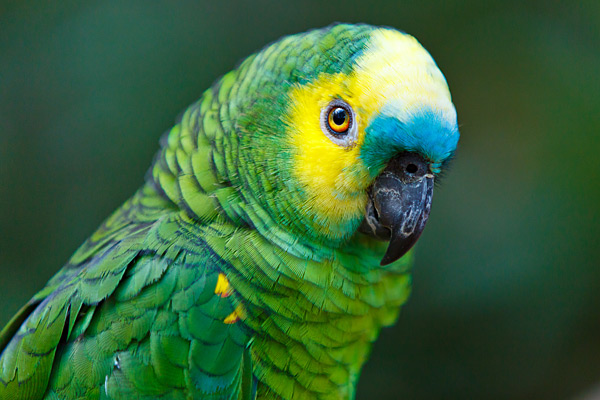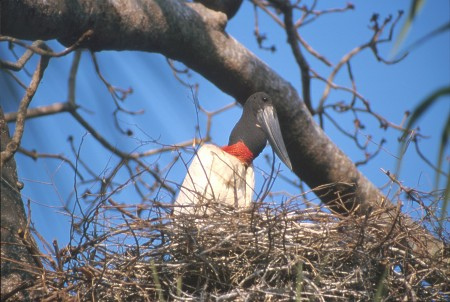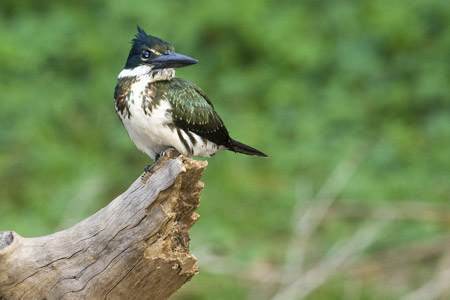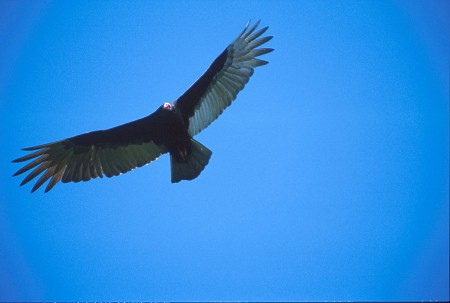Parrots in the Pantanal
The Pantanal is a paradise for bird watchers and photographers. WIth over 600 species to see, you can be assured of variety. The dry season gatherings of wading birds as they feast on fish and crustaceans trapped in the shrinking water holes is an annual spectacular to see.
Modern South America lacks mega-fauna on the scale of Africa - but it makes up for this in diversity. You'll find some of the most beautiful and renowned species, such as the Hyacinth Macaw and Toco Toucan. This diversity occurs due to the Pantanal being located at the confluence of several other ecologically-important regions (such as the Amazon forest, Brazilian tableland plateau, the cerrado, and Paraguayan/Bolivian Chaco).
The diversity is also due to the wide range of environments and landscapes occurring within the Pantanal itself. Rather than being a ubiquitous wetland, it also contains large rivers, grasslands, dry forest, and high stony hills and outcrops. Although there is some competition between species, many also survive in parallel by exploiting different foods and different niches.



PARROTS
There are 20 species of parrot (excluding macaws) in and around the Pantanal. These range from 12cm to 38cm in length - and are all green with various other yellow, blue, grey or red markings around the head, chest or wings. Common species include: Turquoise-fronted Amazon, Orange-winged Amazon, Blue-headed Parrot, Blaze-winged Parakeet, Yellow-chevroned Parakeet, Peach-fronted Parakeet, Green-cheeked Parakeet, Monk Parakeet, Scaly-headed Parrot, and White-eyed Parakeet. Less common species include: Jandaya Parakeet, Pfrimer's Parakeet, and Yellow-faced Parrot.
Parakeets are fairly common throughout the Pantanal and surrounding regions. They typically prefer open woodlands, with several species having also adapted to urban environments. Some species, such as the Monk Parakeet and Orange-winged Amazon, have become popular for the pet trade worldwide, with colonies of escaped birds no being found at various locations in the US, UK and Germany. However, several other species are much rarer and being threatened through habitat loss. This make the Pantanal crucially important as one of the few remaining strongholds
Fortunately, Parrots and Parakeets are fair easy even for inexperienced birdwatchers to find. They are social, and highly communicative - meaning that screeches and squawks are usually the first sign that parakeets are nearby. Most parakeets are monogamous - forming pairs which mate for life and typically always stay close together, although they also group together in flocks which help them find resources and provide protection from predators.








Banner image: Monk Parrots in flight (Alaor Filho)
Turquoise-fronted Amazon parrot. (Shutterstock/MarcusVDT).
Footer images: Tuiuiú, Turkey Vulture(Andrew Mercer); Amazon Kingfisher (Shutterstock/Ecoventurestravel)
Pantanal Escapes